
|   |

|   |
|
January 2022 The distinction between past, present and future is only a stubbornly persistent illusion - Albert Einstein Sometimes the smallest things take up The most place in your heart - Winnie the Pooh 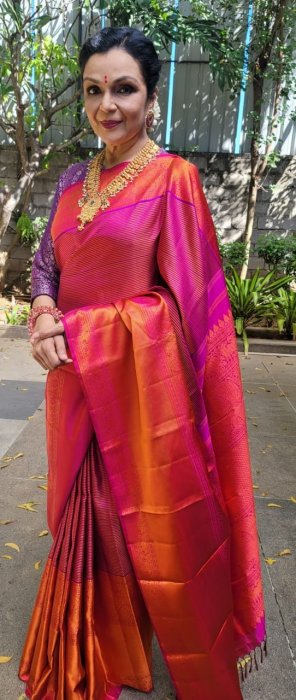 Welcome to a brand new Year And YEAR #3 of the VIRUS As New Year's Eve revelries were cancelled all across India, the week before Christmas witnessed a huge surge of crowds in every public space. Malls, restaurants, theatres, shops, bars and every citadel of faith. Anniversaries and celebrations were jam packed with everyone wanting to squeeze the last ounce of in-person laughter before being banished once again to their homes and the dreary monotony of watching the world through the flat screen. As the OMICRON vapour spreads rapidly, we are frankly, fed up with our noses and throats being poked and scraped for the RTPCR test that is now mandatory for any travel within India across state lines. Masks, hand sanitizers, temperature guns, fist and elbow bumps. The constant ear ache from mask straps, the feeling of suffocation in humid climates. What a New Year we are moving into! Attendance across all Margazhi season performances in Chennai was down significantly. Music, as always, fared better than dance. An audience of 80 to 100 was considered "excellent" for even the most celebrated dancers. Some divas only got 50 people sitting in the sabhas. Of course, those with large student bodies could fill the theatres with their own in-house audience. What came through clearly was that Chennai dancers do not want to watch one another. Except for close friends and those in certain cliques, genuine curiosity and generosity has steadily dwindled in my home town. This year the sparse audiences reinforced the fact that dance watchers for Margazhi are from outside Tamilnadu and beyond the shores of India. The glut of free shows over the past 22 months and the sameness of repertoire being performed could have also been contributing factors for poor audience numbers. But we have to also accept that most of us have become so used to staying home and watching online wearing our joggers, sweats, pyjamas and kaftans that dressing up and going out would mean meeting friends over a meal rather than sitting in a darkened auditorium wearing a mask! I was able to watch 5 shows in a row and felt that every dancer celebrated the sheer joy of being able to perform with an orchestra by their side and REAL PEOPLE seated before them. Even the musicians were smiling as they sang, played and conducted without masks. I found my attention wandering after 45 minutes and had to contain my distracted mind from swiping the phone screen or answering messages. 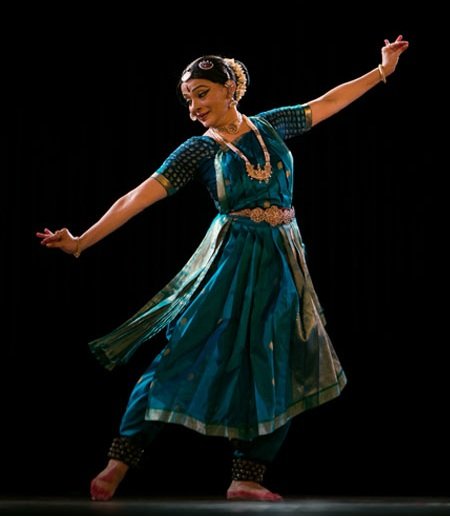 Malavika Sarukkai Sri Krishna Gana Sabha was the only venue that bravely programmed a dancer every day with varied responses. Actor Shobana got a very good attendance but my favourite was Malavika Sarukkai who danced out of her skin and proved that her relationship with dance was deep and strong. In beautifully seated "araimandi" and extensive floor work, Malavika was incandescent in her only live show of the season. Urmila Satyanarayana's GODA was luminous in the group choreography but the heavy ANDAL garland restricted her movement and muted her expressions. 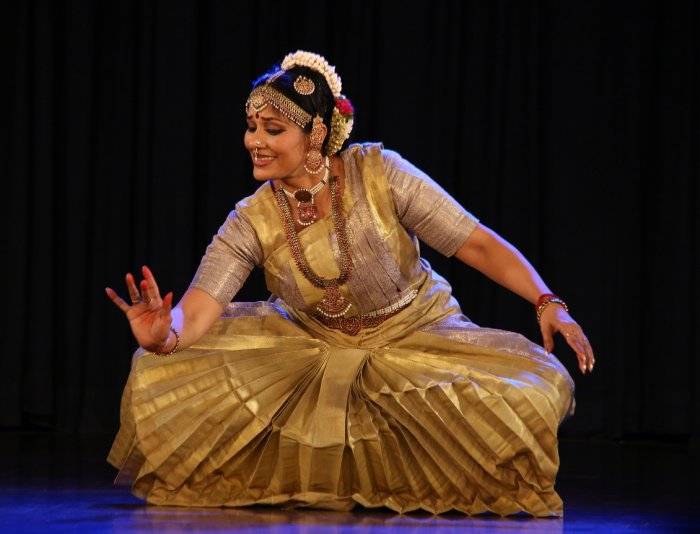 Divya Kasturi (Photo: Yoga) Divya Kasturi left me confused. This bright London based Bharatanatyam performer is rapidly making her way through the UK scene and brought her latest "oeuvre" to Chennai. Titled VARNAM - HERE AND NOW, Divya explored the famous Bhairavi ragam varnam MOHAMANA. This is a gorgeous musical composition that stands on its own and needs no extra embellishment and additions. To dance this single piece with rigour and excellence should be enough of a test for any dancer. Divya forced too many elements into her presentation, including two "jathis" from Adyar K Lakshman's KHAMAS varnam which stuck out like sore thumbs. Further add-ons like the use of her voice shouting "Tyagesa/Aroora" as a trance-struck devotee of Tiruvarur Siva were awkward and unnecessary. Divya should resist these gimmicks, at least when she presents in Chennai. Whatever goes for "tradition" and "funding proposals" in the UK did not work in Chennai. I found a review online after one of her September 2021 presentations at THE PLACE theatre in London. The writer, Shivaangee Agrawal says she left the theatre feeling "disappointed and frustrated". "A confusing mixed bag of ideas that undermined the richness of the intention that she had perhaps begun this project with." EXACTLY what I felt. Divya, a student of Udupi Lakshminarayana from the Elappa Pillai school in Kanchipuram is a gifted and passionate Bharatanatyam dancer. Armed with musical skills, one is left wondering about why such a promising artiste could not have the confidence of her tradition, training and talent to deliver an "authentic" performance. I use the word in quotes since we have been inundated with many words about "authenticity" and much more over the past two years. Dancers are looking to "update, innovate and refresh" traditional pieces which in reality need not be manipulated again and again. Watching Malavika deliver the Dikshitar varnam ROOPAMU JUCHI and then looking at Divya Kasturi's MOHAMANA left me wanting to see another interpretation - this time by the hereditary artistes. I have always said and I will continue to stress the fact that THE SAMENESS OF AESTHETIC IN BHARATANATYAM IS NOW BORING. Speed, cross rhythms, cluttered music, athleticism over artistry, denuded "abhinaya", lack of variations and silences - the noise is deafening. Diversity is crucial and the global avatars of Bharatanatyam must include the body and voice of the traditional dancer. I look at the sameness of programming by the timid Sabha managers and rue the missed opportunity. I have watched young Charumati, granddaughter of Guru Kitappa Pillai, dance a varnam in her ancestral home in Tanjavur with her father Chandrasekharan as conductor. The experience was fresh and unhurried. I have also listened to several popular Telugu and Tamil pada-varnams in a musical concert at a private venue. Without the "jathis" inserted for the dance component, these varnams were brilliant as stand alone pieces. I wonder why Carnatic musicians do not include them in their current repertoire? If we acknowledge the huge shift in the kinetic, physical, emotional and psychological modes of learning, transmitting and receiving training in classical dance, then why are the digital festivals also continuing to be blind to diversity? Why is idea of "transmission" not inviting artistes across the binary divide? What is the fear? As historian Vikram Sampath states, "Let us confront our history, acknowledge the ruptures, mistakes and losses and then move forward. To allow wounds to fester just deepens the hurt." Arjun Appadurai writes of THE FEAR OF SMALL NUMBERS in a series of 6 compelling essays. Against the global rise of terrorism and violence, this cultural anthropologist speaks of movements that foment the desire to eradicate cultural differences as the flow of technology and migration across borders only exacerbates the inequalities produced by globalisation. Why is this relevant for the live arts? We are seeing presenters, funders and audiences responding to high voltage PR about a small clique of artistes to the neglect of the smaller but enormously talented performers. A built-in entourage, a readymade in-house cheerleading team and privileged networks oil the wheels that help the chosen few glide from one spotlight to another. When VIR DAS, a privileged comedian, delivered a brilliantly timed monologue about "TWO INDIAs" at a Kennedy Centre gig, he was actually saying something quite unremarkable. There are more than 2 Indias. At least a dozen Indias are at each others' throats bent on creating chaos and disharmony while the NRI lens glibly continues to spout opinions about a country they don't live in. This dystopian reality is also reflected in the diaspora dance community. Vacillating between extreme nostalgia and devotion to roots, the cacophony of voices and opinions about what should, could and would be about Indian dance is creating a widening chasm that prevents a civil conversation between practitioners, researchers, academics, teachers, sponsors, presenters and writers. One can only sigh in the hope for more artistes like Tamil cinema playback singer L R Eswari (a staunch Roman Catholic) whose 'Bhakti' songs on AMMAN/DEVI became a cult hit with the masses in the 1960s and 1970s. Wearing long strands of jasmine, a silk sari and a large "pottu" on her forehead, Eswari symbolised the inclusivity of Tamil cinema that embraced talent over divisions of community, caste and faith. Pop singer Usha Iyer Uthup cites Eswari as the primary inspiration for her own signature look. On the upside, the growing interest in dance history and academic style content augurs well for the current generation of 20s and 30s. Excellent scholars are now teaching closed door courses on these subjects and while the upper caste Savarna is the target of much of the blame and vitriol, high quality scholarship is ultimately good for the field so that we have multiple viewpoints of the art form we all love. #WHOSE DANCE IS IT ANYWAY?  Prasar Bharati (DOORDARSHAN TV) has come to an agreement with ICCR and perhaps other cultural bodies to broadcast dance content on India's national television channel. Many senior dancers were recorded many years ago with very modest compensation. Now when the same content is being handed over, the question arises, WHOSE DANCE IS IT? Are the artistes involved in the recordings being consulted? Will compensation be discussed? What about the musicians who participated in the original recordings? IPR, copyright issues loom large all over again! 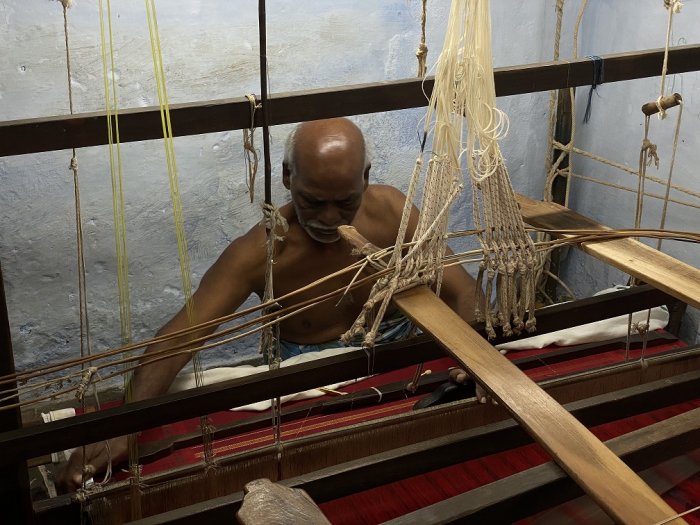 Dancers love saris. So this news is certainly relevant. There is a national protest over the enormous tax hike for saris. From 5% to 12% - a crippling price rise for the already doddering textile and handloom industry. But what about the 18% tax rates that dance schools have to charge their students? Yes, 18% over and above the fees! That is, if schools actually maintain open books as per tax rules. If this is the way the arts and artisans are going to be treated then it will return to a CASH ONLY economy. The continuing "Tamasha-Disney" type dance shows in the name of national pride continue. Rajya Sabha member of Parliament Sonal Mansingh made an appeal during Zero hour about not wasting precious resources on numerous mediocre shows but instead focusing on creating productions that reflect international standards. Nobody is listening even within her own elected government. With the Padma awards coming up and Republic Day parades on the cards, the digital spectacle promises to become more and more bizarre. Artistes' names have long dwindled in the list of awardees. Will this trend continue? #IMMERSIVE CULTURE It was 24 hours of high energy experience. My dream project of taking lazy urbanites to the source and place of the live arts. Kanchipuram is a fascinating temple town, once a famous Buddhist centre and a favourite of Emperor Ashoka's daughter Sanghamitra. Faith, food and fabrics are woven into the warp and weft of this bustling venue that is only a 2 hour drive from Chennai. With 20 excited travellers, I was able to complete a pilot project as part of a new initiative for the NARTHAKI brand. IMMERSIVE CULTURE. 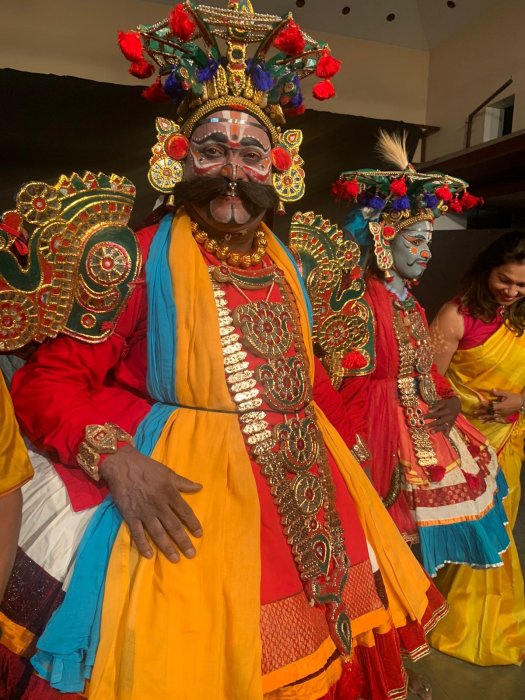 Koothu actor P Rajagopal We started with a visit to the KATTAI KOOTHU SANGAM to watch an excerpt of the KARNA MOKSHAM scene from the MAHABHARATA. P Rajagopal, a 4th generation KOOTHU artiste has broken the gender barrier by training women in this hereditary performance art. Watching them put on layers of makeup, adorned in the wooden ornaments they created and talking to each artiste over a sumptuous dinner was a unique moment. The pilot tour included visits to a rare temple, the modest home of Ekambaram, a sari weaver and a traditional lunch on banana leaf! In 24 hours, it was a true IMMERSION and an eye opening experience for all who attended. My neighbour and the once shy and tongue tied pianist ANIL SRINIVASAN marked his 15 year collaboration with Carnatic musician SIKKIL GURUCHARAN. A combination that started in 2006 with the now iconic RAGAM TANAM PALLAVI in Brindavana Saranga ragam for my NEELAM production, their new sound has become a rage with dancers. The GLOBAL WHARTON AWARD for music education through the RHAPSODY PROJECT is another feather in Anil's restless and visionary cap. # 30 AND COUNTING  We mark 3 full decades of the NARTHAKI brand. First the phone book in January 1992 and then the second edition in 1997 and finally the online avatar in April of 2000. 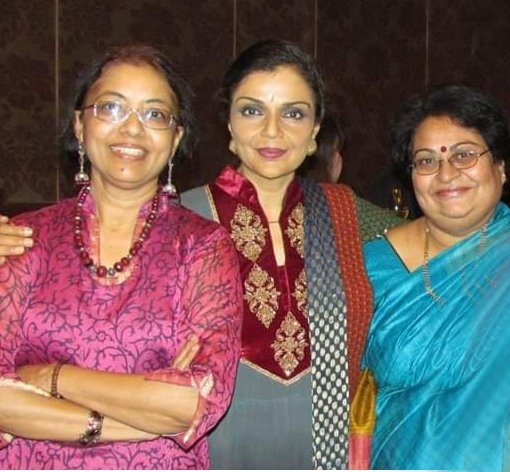 With Lalitha and Raksha 30 years of creating and laying the foundation of a democratic and open ended resource for dancers across the world. Of sharing information and opinions that would feed the development and growth of the Indian dance Eco system worldwide. And the spark that was lit in my NYC television studio in 1990 and voila! Here we are! We conducted an IMPACT SURVEY facilitated by SNS Arts Consultancy and the results were both expected and surprising. We know that for most of you, NARTHAKI is a trusted and admired name. But we have also become somewhat complacent and taken each other for granted. We realise that this generation of APPsters need more clarity and varying content and that we need to recalibrate our own vision looking ahead. NARTHAKI has been MY passion project and I have had the good fortune to have fellow dreamers who fell into the crucible. But we all need to shift, re-focus and refresh. I have experienced a huge learning curve over the past 22 months. My daughter Arya Rajam has been a big part of my education about many things I took for granted. I have had to retract and revise some closely held notions that were grounded in misinformation. I also have realised that while I can continue to be a human dart board to some, I cannot take both praise or blame to heart. It is only the "perception" of who I am that is out there. Not who I really am to myself. As Founder and Managing Editor of the Narthaki platform, I have always wanted to be part of the solution. Not the problem. So look forward to changes and re-calibrations as we bring added value to all of you loyal readers and members. This nationally and internationally celebrated and awarded web portal deserves to grow and flourish as we continue to embrace the rapidly changing world of dance and the live arts. I have accepted an exciting new challenge in my professional career that finds me returning to THEATRE. A familiar tale that will be reclaimed from its colonial patina and recast in a tone and timbre that is long overdue. My role is fantastic and I get to create it alongside a director and choreographer. I can't say more except that it takes me across shores into familiar territory. Brace yourselves. 2022 is here and the future is challenging AND exciting! Among and beyond the virus and its current and future avatars, dancers are inventive, adaptive, and resilient. Look out for each other. Protect your elders. Mask up. Be aware. Get your vaccines. Do not over medicate. This sneaky virus will come and go. We will stay. And DANCE. Squeeze the joy from every single moment. - Anita R Ratnam Colombo / Chennai Twitter: @aratnam Facebook: Anita R Ratnam Instagram: @anitaratnam Blog: THE A LIST / anita-ratnam.blogspot.in Post your comments |